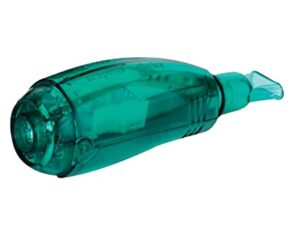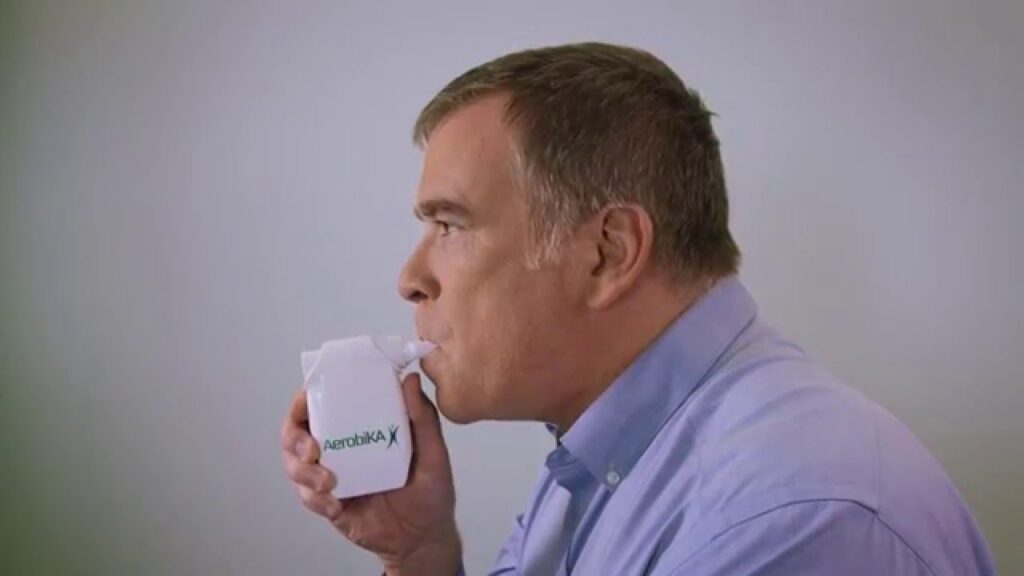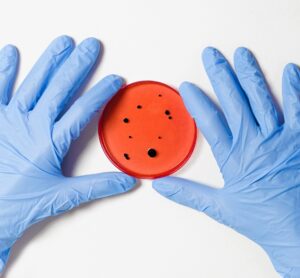Phlegm has a tendency to get stuck deep in the lungs and despite all your best efforts, you may not be able to cough every last bit out. People living with cystic fibrosis and bronchiectasis produce more mucus than most and removing this is crucial to staying healthy. An overview of airway clearance can be found here.
Flutter or PEP (positive expiratory pressure) valves are simple and effective devices that are usually the first step to helping you to clear the mucus out of your lungs. You may have been given one by your doctor or advised to buy one. They are commonly known by their brand names (Flutter®, Acapella®, Aerobika®, and RC-Cornet®). It doesn’t really matter which one you have as long as you are using it correctly. Let’s take a closer look.

The science behind these valves in simple. When you breathe in, air moves freely into your lungs. When you breathe out into the valve, you will feel resistance (and often vibration). This resistance when exhaling makes you take up to four times as long to breathe out. The effect of this is to open up your airways (similar to what happens when you blow up a balloon) and get air behind mucus stuck in small airways. Oscillating PEP valves create a vibration which will help break mucus free and allows you cough it out. All of the brands mentioned above are oscillating PEP valves (= resistance and vibration).
How to do it:
- Sit up with a straight back and good posture
- If you are doing a breathing treatment (such as albuterol) using an inhaler or a nebulizer, do this 10-15 minutes before
- If prescribed, nebulize a mucolytic breathing treatment (such as hypertonic saline, Pulmozyme® or Mucomyst®) after albuterol.
- Take a deep breath and hold it for 2-3 seconds
- Blow out actively through the PEP valve with your lips forming a tight seal around the mouthpiece
- Repeat steps 4 and 5 for 10 breaths
- Next perform huff coughs to move mucus from deep within the lungs closer to where you can cough it out (see this post and this 60 second video for an example of huff coughing)
These steps should hopefully make you cough which is what you want. If you find there is still mucus rattling around down there, take a few more deep breaths through the PEP valve. This technique works well in conjunction with high frequency chest wall oscillation (‘vest’ therapy). If you have a percussion vest, you can wear that at the same time as you use the PEP valve. Remember, this is not a one-size-fits-all approach. Your doctor will determine how intensive your airway clearance should be and develop a regimen tailored for you.
PEP valves may not be covered by your insurance and the cheapest place to buy them is from medical equipment companies selling on Ebay, Amazon or other online retailers.
Remember, never share your PEP valve with anyone else to avoid passing on or acquiring new germs.
Aerobika vs. Acapella
The Aerobika is unique in that you can attach a nebulizer machine to it and use medicines (such as albuterol) through it. It can also be dismantled and cleaned between uses. The resistance can also be adjusted near the mouthpiece which changes how hard it is to blow against. Do not use inhaled antiobiotics through the Aerobika.

When cleaning the Aerobika, take it apart according to supplied instructions. It should break down into 4 pieces. Soak these parts in water for 15 mins and rinse with warm water. Shake to remove excess water and allow to air dry. You can put the Aerobika in the dishwasher (top shelf) but I would recommend against this. Rinse between uses and ideally disinfect weekly – this can be done by placing in boiling water (using a steaming basket or colander) for 5 minutes. You can also soak for 5 minutes in 70% isopropyl (rubbing) alcohol or 3% hydrogen peroxide solution for 30 minutes. Rinse thoroughly after disinfecting and allow to air dry. Watch this video on using the Aerobika device.

The Acapella device can also be washed and rinsed as above. They come apart in some form but should never be placed in the dishwasher. The Acapella Choice® dismantles into 4 pieces and can be washed with your choice of dish soap, 70% rubbing alcohol or 3% hydrogen peroxide. Always rinse thoroughly and allow to air dry. The Acapella DM or DH® break down into 2 pieces, the mouthpiece and the body, both of which should be washed as described above. Like the Aerobika, the Acapella devices have a resistance dial which alters how much pressure you breathe against.
Speak to your doctor about which may be best for you.









